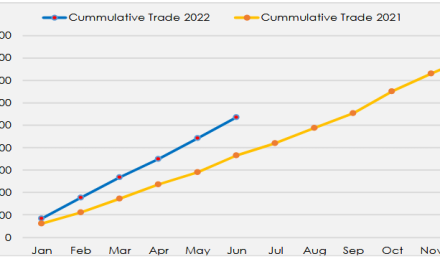
Lower volumes do not deter persistent growth in property prices

Property prices continue to grow unabated albeit on the back of lower volumes. According to the latest FNB Housing Index, median prices rose 13.3% in March, compared to March 2016. Countrywide, the average price for a house is now just over N$1 million. In February, the annual rate was a more subdued 12.2%.
FNB’s housing analyst, Josephat Nambashu said the overall increase was mainly driven by coastal properties which rose by 21.2% from March 2016 to March 2017. Here, the average price for a house is N$1.2 million.
In contrast, prices in the central area, including Windhoek rose a comparatively weaker 15.2% and even the southern regions recorded a 11.4% growth. It was only in the North where the annual growth rate slowed to 1.4%. This is the slowest growth in seven years for the North.
In real terms, housing keeps outpacing inflation by several percentage points but the trend is up. Whereas real prices only increased by 2.5% in February this year, this metric jumped to 3.7% in March.
Although the impact of the lack of liquidity does not show up in the price statistics, it is definitely reflected by the decline in volumes. In the central area, for instance, volumes declined by 6.1% from March 2016 to March 2017.
Nambashu said that high income suburbs in the capital have begun to pick up after a general downward trend in recent months. The strongest growth was recorded in Windhoek’s western suburbs.
Mentioning the effect of a sufficient supply of new housing, Nambashu said the rate of price growth in northern towns continues to come down.
“Accordingly, prices rose marginally by 1.4% to their record high of N$725,000, while volumes increased by 17.9%. Katima Mulilo recorded the highest price growth of 45.9%, followed by Okahao at 29% and Oshikuku 28.5%. Twelve of the highest price movements are in the northern regions, however, the massive price drops in Rundu and Oshakati have neutralized the overall price movement at the segment level. The decline in Rundu and Oshakati are potentially supply driven based on the volume increase in the two towns” according to Nambashu.
Southern property prices increased by 11.4% to N$592k over the last 12 months, but this is a rather thin market and price movements should be treated with utmost caution.
On the obvious disparities between Windhoek and the rest of the country, he said “Recent data shows a widening price gap between the national and Windhoek property markets. This suggests that other factors are starting to play an increasingly significant role in the national property price determination. We suspect this may be due to a much weaker price growth along with stronger volume growth in northern region property prices, rather than the increase in central property prices. Low numbers of sale transactions in some part of country, such as the Southern region, can also lead to volatility in the series, further widening the gap.”
“For now, we expect seasonally adjusted demand to remain robust in the short term, pushing house price inflation higher to 14.4% by year end. However, tight credit conditions along with disposable income pressures will reverse the trend through 2018 to 9.3%. Mass housing delivery could push price expectations lower than forecast” he speculated.












































